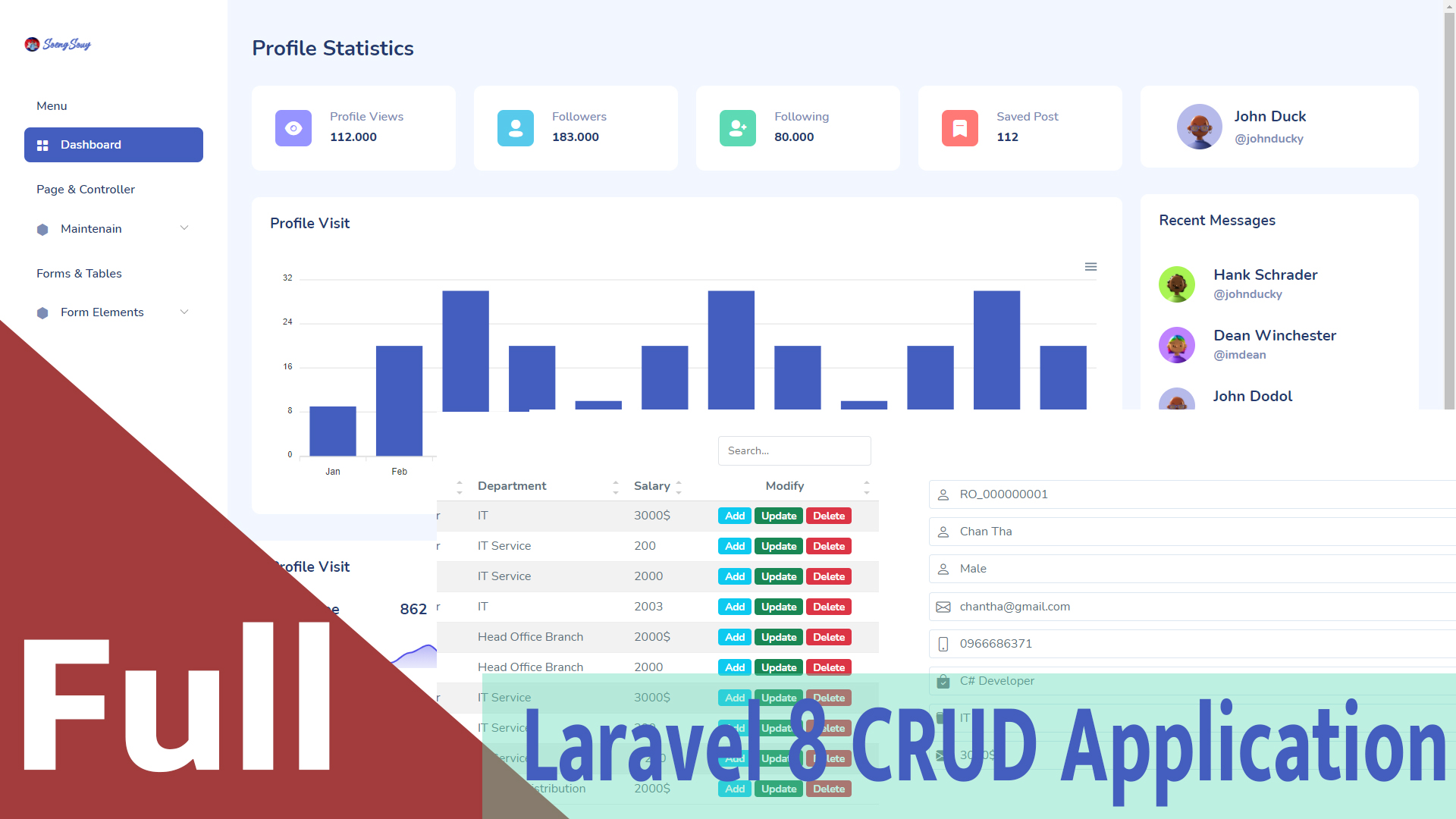Admin dashboard in Laravel | Sign up and Sign
Prerequisites:* Git: Git is a version control system used for tracking changes in source code during software development. Make sure Git is installed on your system. You can download Git from https://git-scm.com/ and follow the installation instructions for your operating system.
* PHP: Laravel requires PHP to be installed on your system. You need PHP version 7.3 or higher. You can check your PHP version by running php -v in your terminal.
* Composer: Composer is a dependency manager for PHP and is used to install Laravel and its dependencies. You can download Composer from https://getcomposer.org/ and follow the installation instructions for your operating system.
* Web Server: You'll need a web server to serve your Laravel application. While Laravel comes with a built-in development server, it's recommended to use Apache or Nginx for production deployments.
* Database: If the cloned project uses a database, make sure you have the required database management system (e.g., MySQL, PostgreSQL, SQLite) installed on your system.
Steps to Clone and Set Up the Project:
Open a terminal or command prompt and navigate to the directory where you want to clone your Laravel project. Then, run the following command:
* Git: Git is a version control system used for tracking changes in source code during software development. Make sure Git is installed on your system. You can download Git from https://git-scm.com/ and follow the installation instructions for your operating system.
* PHP: Laravel requires PHP to be installed on your system. You need PHP version 7.3 or higher. You can check your PHP version by running php -v in your terminal.
* Composer: Composer is a dependency manager for PHP and is used to install Laravel and its dependencies. You can download Composer from https://getcomposer.org/ and follow the installation instructions for your operating system.
* Web Server: You'll need a web server to serve your Laravel application. While Laravel comes with a built-in development server, it's recommended to use Apache or Nginx for production deployments.
* Database: If the cloned project uses a database, make sure you have the required database management system (e.g., MySQL, PostgreSQL, SQLite) installed on your system.
Steps to Clone and Set Up the Project:
Open a terminal or command prompt and navigate to the directory where you want to clone your Laravel project. Then, run the following command:
https://gitlab.com/SoengSouy/laravel-9-clone-project-admin-dashboard-sample.git
https://gitlab.com/SoengSouy/laravel-9-clone-project-admin-dashboard-sample.gitReplace <repository-url> with the URL of your Laravel project's Git repository. You can find this URL on your Git hosting service (GitHub, GitLab, Bitbucket, etc.).
<repository-url> with the URL of your Laravel project's Git repository. You can find this URL on your Git hosting service (GitHub, GitLab, Bitbucket, etc.).Navigate to the Project Directory:
Change into the project directory using the following command:
cd <project-directory>
cd <project-directory>Replace <project-directory> with the name of your project directory.
Install Composer Dependencies:
Laravel uses Composer to manage its dependencies. Run the following command to install the necessary dependencies:
Laravel uses Composer to manage its dependencies. Run the following command to install the necessary dependencies:
composer install
composer installCreate a Copy of the Environment File:
Laravel requires an .env file for configuration. Create a copy of the .env.example file and name it .env:
Laravel requires an .env file for configuration. Create a copy of the .env.example file and name it .env:
cp .env.example .env
cp .env.example .envEdit the .env file to set up your database connection and other configuration settings.
Edit the .env file to set up your database connection and other configuration settings.
Generate Application Key:
Run the following command to generate the application key:
php artisan key:generate
php artisan key:generateUpdate Your Database Credentials
After that update your database credentials in your .env file in your project root.
DB_CONNECTION=mysql
DB_HOST=127.0.0.1
DB_PORT=3306
DB_DATABASE=your_db
DB_USERNAME=root
DB_PASSWORD=#your database passwordMigrate Database:
Run the database migrations to create the necessary tables in your database:
php artisan migrate
php artisan migrateServe the Application:
Finally, you can use the following command to start the Laravel development server:
php artisan serve
php artisan serveThis will make your application accessible at http://localhost:8000 by default.
This will make your application accessible at http://localhost:8000 by default.



